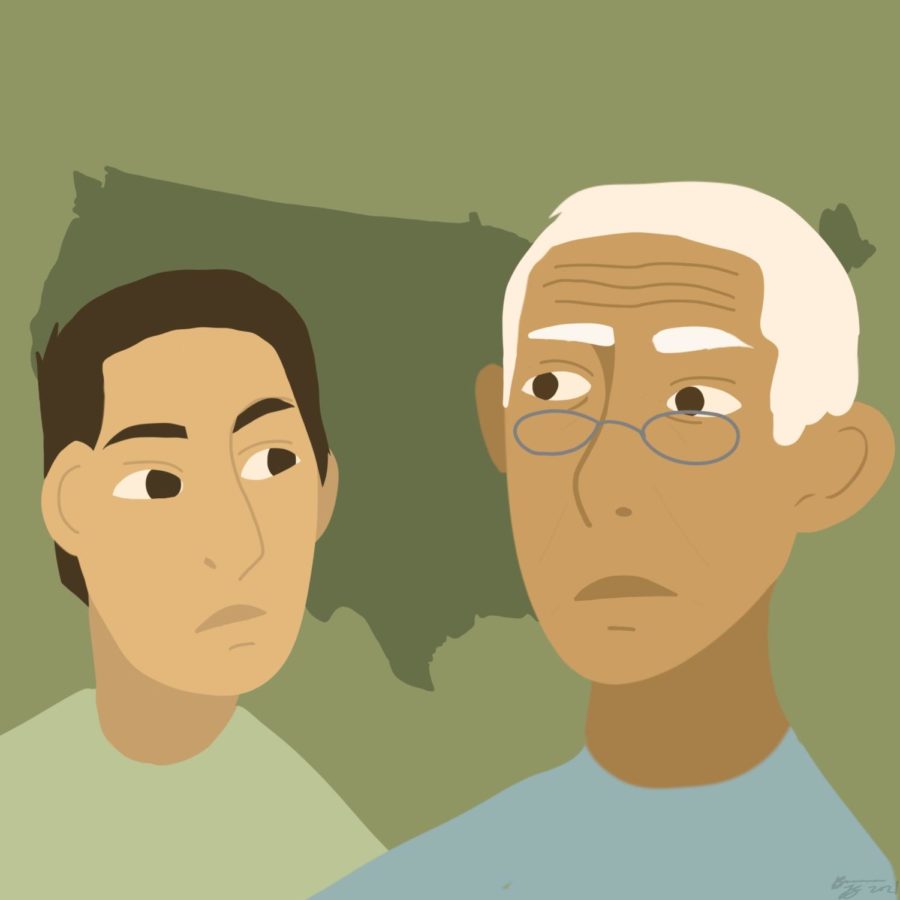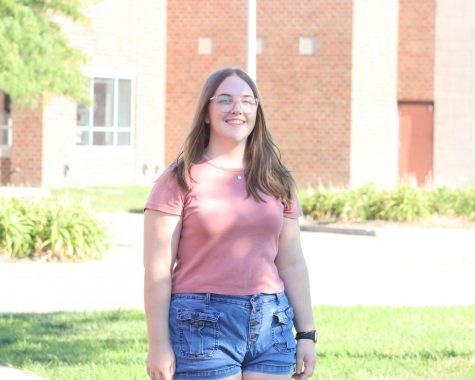America hates the elderly
Ageism is hurting everyone
Ageist stereotypes are harmful for all Americans, and they are causing a rift between older and younger generations in the country.
May 10, 2021
America is obsessed with youth. We fund billion-dollar industries that help people cling to their younger days through Botox, cosmetic surgery, hair dye and retinol. In 2019, we spent almost 17 billion dollars on plastic surgery procedures, the majority of which were performed on people in the 40-54 year age range. Magazines photoshop out wrinkled skin. Actors on TV have dyed out any strand of gray hair.
American youth culture shames the natural and inevitable process of getting older. It has led to rampant ageism, defined as stereotypes, prejudices and discrimination based on age. Ageism can reduce life expectancy by 7.5 years, according to the World Health Organization, and it can lead to poor disability recovery and mental health.
Companies make big profits off this anti-aging sentiment by advertising ageist beauty standards. They turn signs of physical maturity into sources of shame for their own profit; store shelves are lined with skincare products that advertise “anti-aging properties,” often accompanied by high price tags. Consumers buy into this by valuing physical image over traits like wisdom or self-awareness, spending billions each year to erase dark spots and wrinkles. This ideology — that beauty starts to decline once you hit your 40s or 50s — may keep the beauty industry booming, but it’s harmful to Americans.
Ageist stereotypes regarding the elderly are instilled from a young age. Before we hit our 20s, most Americans fear aging. The elderly are often portrayed as out of touch, bad with technology and unable to adapt to change. To further perpetuate these stereotypes, we tell older Americans what they should do and shouldn’t do once they’ve reached a certain age: you shouldn’t be partying once you hit 40, you shouldn’t wear bright colors past 50.
In our crusade to make America seem young, we shove older Americans into the corner, push them into nursing homes or retirement communities and push them out of cultural conversations. Rather than value the insight and experience of older generations, we label their traditions, needs and values as “outdated.” Today’s internet culture may be to blame for the lack of connection between generations. Why ask your grandparents to teach you how to make your favorite childhood recipe when you could just Google it? Why have a 20-minute conversation with your elderly neighbor about their experience growing up in the 1950s when you could watch a five-minute video online about it?
The COVID-19 pandemic has proven that ageism has consequences. When we learned that those over age 65 were at the most risk for serious complications from COVID-19, our response changed. While elderly people make up the majority of deaths from COVID, with 95% of deaths being from those over 50, younger people make up the largest portion of cases and are responsible for much of the spread. Because younger people started to perceive the disease as only deadly to older people, many stopped bothering to do their part to slow the pandemic. Getting back to normal life became more important than protecting others, especially older Americans, proving that we see the elderly as disposable.
This youth-obsessed culture hurts high schoolers. We’re made to believe we’ll peak by age 25, which makes the pressure to succeed enormous. We read headlines of Forbes’ “30 under 30,” Inc’s “35 under 35” and The New Yorker’s “20 under 40.” Even in our mid-20s, when we have decades left to figure ourselves out, accomplish our goals and build a career, we believe we need to find success while we’re young because the accomplishments of older people are seen as less impressive, less worth celebrating.
Even though ageism isn’t exclusive to America, many of the harmful cultural habits and stereotypes are. For example, America often pushes older people to the margins of society by separating them from the general population and culture. By contrast, in Okinawa, Japan, which has one of the oldest populations in the world, communities include the elderly in all their activities. They value the relationships these gatherings can foster between the old and young, and they emphasize the importance of keeping the elderly active in their local community. In this city, older people thrive; their quality of life, community involvement and overall health is remarkably high. America could learn a lesson from Okinawa; when you value and honor the elderly instead of hiding them, everyone benefits.
Recent studies have found that local, intergenerational community solutions have both cultural and medical benefits for people of all ages. Research from the World Health Organization, as reported by the New York Times, tested activities where college students talk to older people through email, elementary schoolers gardened with residents at a senior center and high schoolers followed curriculum that discussed aging and development. The study found that these solutions led to “significantly less ageism on attitude tests and greater knowledge of aging than comparison groups that hadn’t taken part.”
Confronting these stereotypes at early ages will impact education, the workforce and, most notably, the medical field. Analysis of National Health and Retirement study data suggests that one in 17 people over age 50 experience age-related medical discrimination “frequently.” Older people are routinely left out of medical studies, yet issues with medication are one of the top five causes of death in adults over 65. Medical ageism is rooted in the lifelong stereotypes ingrained in us from an early age, and it impacts “the type and amount of care offered, requested and received” according to the American Society on Aging.
America, including American teenagers, needs to embrace aging. The natural aging process and physical signs of aging should be seen as healthy, normal and worth celebrating. We need to change the cultural perception to one that values the viewpoints of elderly people and recognizes that even though we may perceive them as out of touch with modern reality, their experiences give them a perspective that could benefit us. Above all, we should embrace the idea of elderly people finding success and living fully.









Michael • Apr 20, 2025 at 5:55 pm
This is an incredible article. I have shared it with many. I do not understand why most younger people I come in contact with do not respect the older generations.